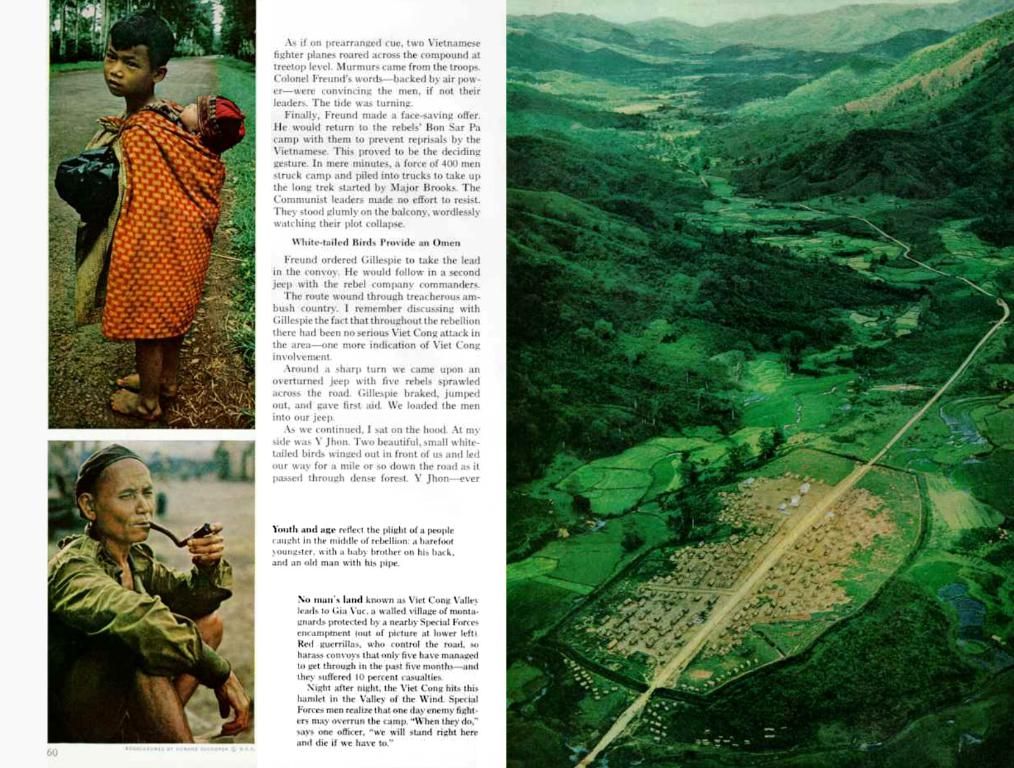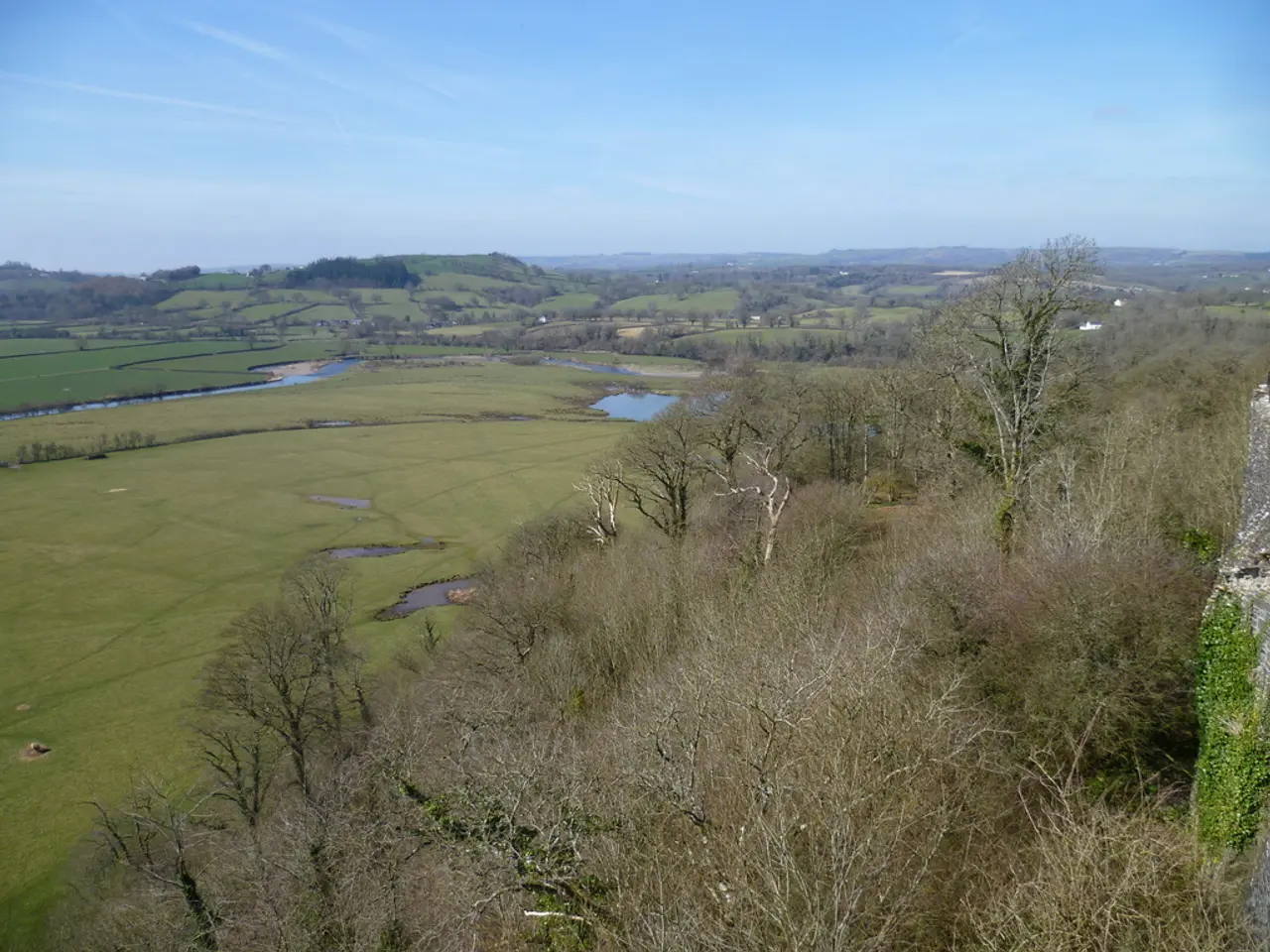Sources for Free Soil for Gardeners: Locations to Explore
Start your gardening journey on a budget by getting your hands on free or cheap soil. Here's how to do it:
- ** municipal waste disposal:** Many cities have composting programs that let residents fetch free or discounted compost. You can also score mulch and straw from your local waste disposal site for no cost. Remember, use only garden-grade soil for your beds, as topsoil may lack necessary nutrients for healthy plant growth.
- Hugelkultur: This innovative eco-friendly technique minimizes the amount of soil needed for your garden. Fill the lower parts of a raised bed with organic materials like tree limbs, branches, mulch, and cardboard to create a nutrient-rich environment for plants to thrive.
- Gardening community: Connect with your local garden enthusiasts through neighborhood forums or community groups. Don't be afraid to ask if anyone has unwanted soil, mulch, or compost to give away or sell at a low cost. You can even utilize platforms like Craigslist, Reddit, and Freedirt.com to find free soil.
- Landfills: Check local landfills or waste management facilities for designated areas that accept dirt from residents. Research regulations and requirements before visiting.
- Local farmers: Reach out to nearby farmers or construction sites to see if they have excess dirt or manure to share. Always make sure the soil is safe and free of contaminants before use.
What You'll Learn:
- Finding free soil from municipal waste disposal
- Creating Hugelkultur beds
- Connecting with local gardening forums
- Visiting landfills and farmers
Municipal Waste Disposal
Score free or low-cost compost, mulch, and straw from your local waste disposal site. For compost, it will need to be mixed with coconut coir or peat moss, along with vermiculite, to create the optimal consistency and absorbency for planting.
Local municipal waste disposal
Hugelkultur Technique
Compost, mulch, and straw
Fill the lower parts of your raised bed with organic materials like tree limbs, branches, mulch, and cardboard using the Hugelkultur method. Start with large pieces and work your way down to smaller bits, with mulch and other tiny pieces towards the top, below your soil. This technique saves several cubic yards of soil, as you only need eight inches above the organic material to plant.
Gardening Forums
Hugelkultur method
Tap into your local gardening community by joining neighborhood forums, community groups, or online platforms like Craigslist, Freecycle, or Freedirt.com. Post a request for free soil or soil-related materials and reap the benefits of your gardening neighbors.
Tree limbs, branches, mulch, cardboard
Landfills and Waste Management Facilities
Your local area may offer specific sites, such as public landfills or dedicated areas, that accept dirt from residents. Ensure to research regulations and requirements before visiting.
Local gardening community
Clay Soil Gardening: Tips for UK Gardeners
Unused soil, mulch, compost
You May Also Like:
Hugelkultur Method
Local farmer
Create a self-sustaining raised bed using the Hugelkultur method. Here is a step-by-step recipe:
Excess dirt, soil, or manure
- Choose a sunny spot
- Remove the sod and dig a trench
- Place logs and water them
- Build your mound
- Plant seeds or seedlings
Community Compost Days
Construction sites
Find free or low-cost compost, mulch, and soil-related materials by attending community compost days in your city.
Dirt, wood chips, and other materials
Working Groups and Urban Soil Health Initiatives
Connect with urban soil health groups and participate in community events and workshops to improve your soil quality affordably.
Online forums
Composting Programs
Craigslist, Reddit, Facebook
Attend local composting workshops and learn how to create your organic fertilizer at no cost.
Networking with Local Gardeners
Join community garden walks, farm tours, and local gardening groups to get free soil or tips on where to find it.
Social Media and Local Online Platforms
Social media platforms like TikTok and Instagram can guide you to local soil resources and gardening tips.
Frequently Asked Questions
Can I use wood as soil in Hugelkultur?No, wood doesn't provide the necessary nutrients for plants. However, it holds water and decomposes over time, releasing nutrients into the soil.
How long does it take for the Hugelkultur method to work?It can take a year or more for the logs to break down enough to release nutrients. However, you can plant low-maintenance, quick-growing plants like squash, beans, and radishes while you wait.
What types of plants are best for clay soil?Plants that thrive in clay soil include hostas, hydrangeas, roses, daylilies, and fuchsias. You can add amendments like coir, compost, or sand to improve drainage.
- Incorporate the Hugelkultur technique into your gardening lifestyle by utilizing organic materials such as tree limbs, branches, mulch, and cardboard for a self-sustaining raised bed.
- Tap into your home-and-garden by attending community compost days in your city or connecting with local gardening forums to find free or low-cost soil, compost, and mulch.




